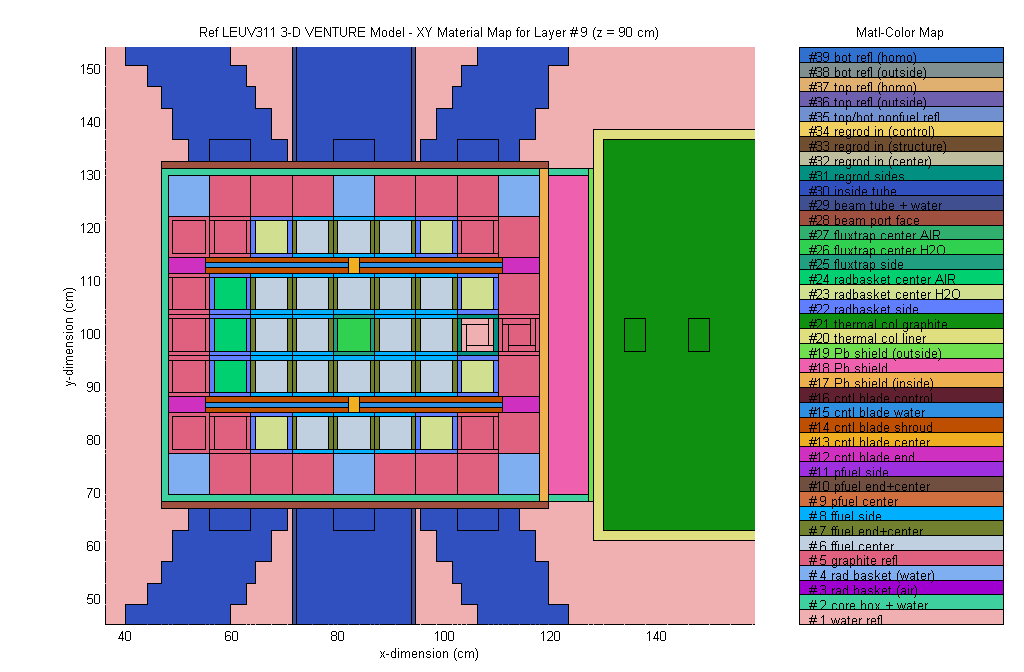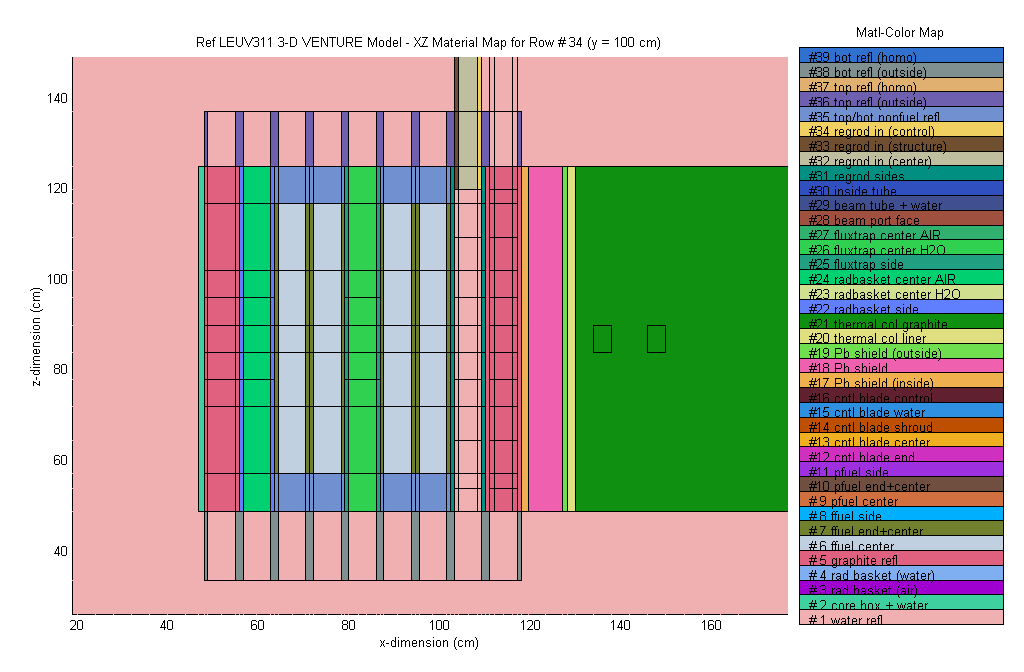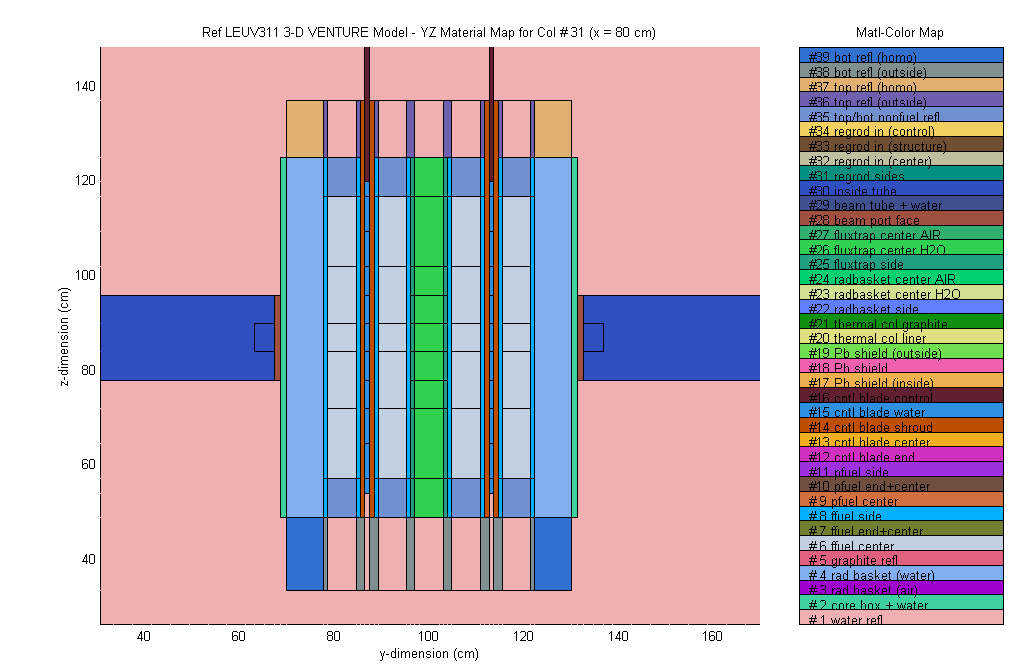- 2-group diffusion theory model within the VENTURE code
- 130x121x65 mesh grid in the three coordinate directions (over 1 million mesh points total)
- 17 axial planes that allow a relatively detailed axial representation for control movement (11 positions), fuel burnup (5 axial regions), and irradiation sample sizes and axial locations (8 axial zones)
- 947 different zones that allow considerable flexibility in the various material configurations that can be treated
- capability to place the regulating rod in either grid location D8 or D9
- definition of several edit regions to allow characterization of the experimental facilities for different arrangements of fuel elements and graphite and water reflector assemblies
- explicit treatment of the flux trap irradiation region
- extra zone detail in the six grid positions (C1-C2, D1-D2, and E1-E2) for characterization of enhanced irradiation facilities (in the future)
- etc.
Overall the model is quite flexible -- and hopefully it can serve as a focal point for startup planning, operational support, and core follow/burnup analyses for the LEU core for the foreseeable future.
Because of the complexity involved in the 3-D model, a Matlab-based visualization tool was also developed in parallel with the 3-D VENTURE model -- primarily as a geometry debugging tool. This program, referred to as PLOT_VGEO, will allow one to plot a combination zone and material map for any XY, XZ, or YZ plane within the model. Three such pictures are attached as examples of its capability and also to illustrate the level of detail that is treated in the overall 3-D model. These three cuts are taken near core midplane in each of the respective three directions. Any other row (y location for XZ cuts), column (x location for YZ cuts), or layer (z location for an XY view) can also be chosen to help visualize the full geometry model and material configuration.
On option, PLOT_VGEO can also write a significant portion of the actual VENTURE input file. This feature will save countless hours of VENTURE input preparation and debugging -- and it works for both 2-D and 3-D models. Thus, PLOT_VGEO represents a significant enhancement in our ability to generate base models and to modify existing models in a more timely manner.
Only a few actual computations have been made with the new 3-D model thus far. At present there is no output processing capability for the flux and power distribution information (and these data files are very large), so all that has been addressed is the base multiplication factor and a few blade worth calculations. Summary comparisons of the available data with the reference 2-D model are given below:
|
Case Description |
2-D Model |
3-D Model |
|
Ref keff (all blades out) |
1.02491 |
1.04212 |
|
Total worth of Blade 1 |
3.00 |
2.98 |
|
Total worth of Reg Rod in D8 |
0.58 |
0.58 |
As indicated, the worth calculations are nearly identical, and since this was expected for the total worths, these comparisons serve as one preliminary check on the new 3-D model. The nearly 1.8 % increase in the base reactivity is not unusual since several approximations were made in the 2-D model to account for axial effects. However, it should also be emphasized that the accurate computation of absolute reactivity levels with 2-group diffusion theory is very difficult, and both the 2-D and 3-D computations for keff can have high uncertainty. Subsequent MCNP models and/or the actual measured value of kexcess will be needed to confirm the accuracy of this quantity.
Clearly, additional verification is needed for the new 3-D model and a whole sequence of computations is planned to estimate several sample reactivity worths and to determine the differential and integral control blade worth curves for the new LEU–fuelled UMLRR. With the base 3-D model now available, these computations and analyses are now possible and they will be completed over the next several months -- as time permits.


